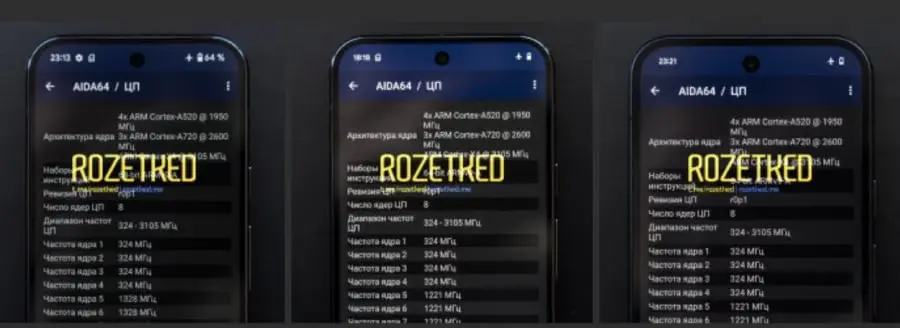Earlier this month, the Russian source Rozetked unveiled the first live images of the Google Pixel 9 phones. Now, the same source has disclosed core architecture details and preliminary benchmarks of Google’s Tensor G4 chips that power these devices.
The leak reveals that the Tensor G4 employs a 1+3+4 core configuration, featuring the powerful Cortex-X4 as the main core, three mid-range Cortex-A720 cores, and four energy-efficient Cortex-A520 cores.
Architectural Differences
This setup significantly differs from the original Tensor and G2’s 2+2+4 configuration and the Tensor G3’s 1+4+4 arrangement. Interestingly, Google seems to be reverting to an octa-core CPU layout, moving away from the nine-core design used in the Tensor G3.
Benchmark Performance
Here’s a comparison of the Tensor G4 against previous Tensor SoCs (via 9to5Google):
| Tensor | Tensor G2 | Tensor G3 | Tensor G4 |
|---|---|---|---|
| 2x Cortex-X1 (2.8 GHz) | 2x Cortex-X1 (2.85 GHz) | 1x Cortex-X3 (2.91 GHz) | 1x Cortex-X4 (3.1 GHz) |
| 2x Cortex-A76 (2.25 GHz) | 2x Cortex-A78 (2.35 GHz) | 4x Cortex-A715 (2.37 GHz) | 3x Cortex-A720 (2.6 GHz) |
| 4x Cortex-A55 (1.8 GHz) | 4x Cortex-A55 (1.8 GHz) | 4x Cortex-A510 (1.7 GHz) | 4x Cortex-A520 (1.95 GHz) |
Early Benchmark Results
In terms of benchmarks, all devices scored over 1 million points on AnTuTu. Specifically, the base Pixel 9 achieved 1,016,167 points, the Pixel 9 Pro reached 1,148,452 points, and the Pixel 9 Pro XL scored 1,176,410 points.
The standard Pixel 8 scores around 900,000 points on AnTuTu, so the performance gain on the Pixel 9 is not very substantial.
However, these are early benchmarks on devices running pre-release software. Further software optimization and adjustments are expected, which should enhance the phone’s overall performance.



Leave a Reply